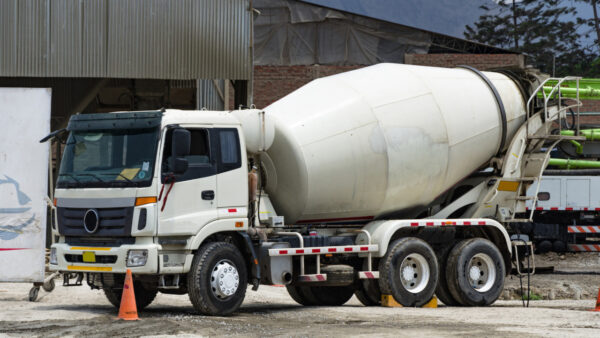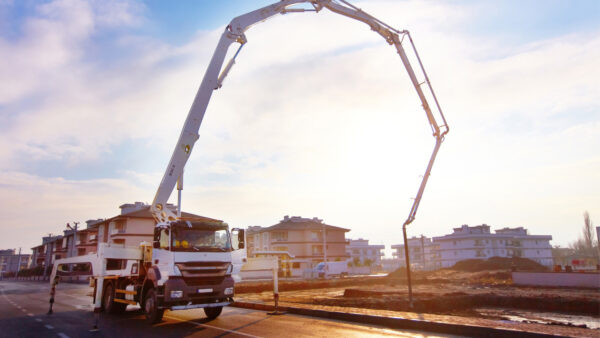Mechanical mixing of raw materials that make up concrete is carried out in mixers. However, the selection of the right mixer for your project depends on a lot of factors and we will walk you through all of them.
As part of project planning, it is essential to decide which mixer will be the best choice for optimized results in terms of quality and cost. Of course, the mixer choice largely depends on your project’s allocated budget, however, there are other factors that will help you get to a conclusion.
Let us first discuss the types of concrete mixers, most or all of which you would have already seen on construction sites.
Concrete mixers can broadly be classified as batch mixers and continuous mixers.
Table of Contents
Batch Mixers
These mixers produce concrete mix in batches and the process is repeated for the required concrete quantity. There are further two categories of batch mixers as explained.
1. Drum Type Mixers
These mixers have a drum that mixes the ingredients and finally discharges concrete. These are of three types as follows:
-
Tilting Drum Mixer (T)
This portable mixer type, as the name indicates, has a bowled shaped tilted drum that rotates on an inclined axis. It only has a single opening at the top and the feeding and discharging operations are executed through it.
In order to discharge or pour concrete from the mixer, it is tilted in the downward direction. The mixing of concrete ingredients inside the mixer is in a circular fashion and this is achieved from the vanes fixed inside.
During each rotation of the drum, the vanes fixed inside lift the concrete to a certain height and allow the mixture to drop at the drum’s bottom. This helps in achieving a homogeneous concrete mix from top to bottom.
This mixer can effectively execute the mixing process even if bigger sized coarse aggregates and to be incorporated. It helps produce satisfactory mixes having low workability that are not prone to segregation.
However, with this of mixer, you might end up with some mortar adhering to the drum that is left out and not discharged. To get a check on this, buttering of the mixer is done. This includes adding some water into the mixer before the first batching.
-
Non-Tilting Drum Mixer
As the name suggests, a non-tilting drum mixer (NT) has fixed blades that rotate about the horizontal axis only and the drum does not have a tilting facility. There are two central openings on each side and vanes located inside the cylindrical drum.
One opening present at the front is used to feed the concrete constituents into the drum and the other at the back is utilized for discharging the mixed concrete out of it. However, since no provision of tilting is available, the concrete is poured out by introducing an inclined chute in the drum at the rear end with the help of lever.
These mixers are generally used for large-scale concrete production.
A disadvantage of this type of mixer is that the phenomenon of segregation may occur unlike the tilting drum mixer.
Non-tilting mixers are designated with a number which represents the nominal mixed batch capacity. For example, 200NT implies that the drum capacity of this mixer is 200 liters.
|
Standard Available Sizes of Non-Tilting Drum Mixers (NT) |
Type |
Capacity (in Liters) |
|
200NT |
200 | |
|
280NT |
280 |
|
|
340NT |
340 |
|
|
400NT |
400 |
|
| 800NT |
800 |
-
Reversible Drum Mixer (R)
A reversible drum type mixer is similar to an NT mixer. It has a cylindrical drum with fixed blades. There are two openings at the front and rear of the drum, one being used to feed the ingredients and the other used to discharge concrete.
The cylindrical drum consists of two sets of blades that rotate in reverse direction. One set of blades functions to mix the concrete and the other rotating in the opposite direction propels the concrete out of the mixer.
This type of mixer is normally employed for large construction works. It is equipped with a hopper that moves up and down on an inclined set of rails and dumps the concrete ingredients through the drum opening.
The time and effort required for tilting the drum is minimized by using a reversible drum type mixer. However, these mixers discharge concrete at a slower rate and this may lead to concrete segregation.
These mixers are designated by a number which represents its nominal mixed batch capacity in liters followed by R. The standard sizes of this mixer type are given in the table below.
|
Standard Available Sizes of Reversing Drum Mixers (R) |
Designation |
Capacity (in Liters) |
|
200R |
200 |
|
|
280R |
280 |
|
|
340R |
340 |
|
|
400R |
400 |
2. Pan Type Mixers
Pan type or stirring concrete type mixers are non-mobile mixers used either at a central mixing plant or at a precast concrete factory. These mixers primarily function to produce mortar but can also be employed for manufacturing stiff and cohesive concrete mixes.
They are generally available in two types.
-
Open Type Pan Mixers
In open type pan mixers, the shaft with rotating blades is fixed at the center of the drum which is attached to the belt system at the bottom. As the belt rotates, the shaft starts to rotate which in turn mixes the concrete ingredients.
Once the required mixture is obtained, the concrete is drained out through an outlet provided at the bottom.
-
Closed Type Pan Mixers
These are also referred as the “dual drum mixers”. It is generally used for mixing concrete for construction of pavements. The drum of the mixer comprises two hemispherical halves, one is attached to the shaft which facilitates rotation. The other is free to slide over allowing the drum to open at the center.
Owing to the creation of cross-flow between the blades, turbulence is produced and a homogenous concrete mix results. The main advantage of this type of mixer is that the resulting concrete is free from segregation.
Continuous Mixers
A continuous mixer produces concrete mixes at a constant rate. The ingredients are continuously fed into the mixer using screw feeders and the concrete is discharged or collected from the other end. This type of mixer is generally used in mass production of concrete.
The production of concrete in a continuous mixer is continued till the end of concreting work.
Concrete Mixers with Pumps
Concrete mixer pump is a construction equipment that integrates mixing and pumping. It adopts an integrated design, takes up a small space, is flexible to move and facilitates construction and improves work efficiency.
It is suitable for all kinds of concreting works including construction of a house or any large projects of a multi-story building, roads, bridges, tunnels, etc. However, the efficiency of such a mixer can effectively be utilized in areas where concreting is difficult owing to either space limitation or access limitation.
The concrete can be pumped up to a vertical clearance of 20 to 50 meters and a horizonal distance of 100 to 200 meters.
Concrete mixer with pumps serves multifold advantages some of which are explicitly described below.
- The mixer offers a high degree of automation and has a compact structure.
- The mixer operation is under proper command and stability.
- This type of mixer often results in energy-saving due to absence of unwanted halts in concreting work.
- The concrete can be easily conveyed to a long distance through pumping.
- The mixer can conveniently be moved and maintained with low cost of usage.
Working
Concrete mixer pump consists of a power system (either electric motor or engine), a full hydraulic double-cylinder pumping system, a drum mixer and an electronic control system that efficiently controls the machine’s reliability.
The ingredients are fed into the mixer that can either be a barrel mixer or volumetric mixer, depending upon need. The ingredients include cement, sand, coarse aggregates, water, and admixture (if any).
Once the concrete is produced by thorough mixing of ingredients, it is pumped to where it is to be placed. However, in order to pump concrete, a careful mixing of ingredients is to be carried out to get the desired slump of workability of mix.

Pouring of pumped concrete
It should be ensured that the required pressure for pumping concrete against the direction of gravity should be attained by the adequately flowable mix and the pipe being lubricated beforehand. Some considerations in this regard are briefly given as follows.
- The cement content in the mix must be regulated if concrete is to be pumped. This is because too high a cement content will create friction between concrete and pipe, making it difficult to pump it. On the other hand, very less cement will also make it difficult to pump concrete because of segregation within the pipe.
- The flowability of concrete should be regulated and for concrete to be safely pumped, the slump value should be between 2 to 4 inches. Stiff mixes will cause choking of the pipe and very flowable ones will cause segregation.
- The maximum size of coarse aggregates should not exceed one-third of the smallest inside diameter of the pipe. In addition, aggregates must be well-graded and angular particles having a large ratio of surface area to volume should be avoided.
- The proportion of coarse aggregates in pumpable concrete is to be such that it does not hinder in the pumping process. This is because majority of issues related with pumping concrete are associated with aggregates being too coarse, making the mix harsh and stiff.
- Before pumping the concrete, a batch of mortar is made to flow inside the pipe in order to prime the machine before the actual concrete mix flows. This is to minimize friction between concrete and walls of the pipe.
- Concrete should be pumped with minimum bends in the pipe during the pumping operation.
- When pumping downwards, the provision of an air-relief valve at the middle of the top bend in the pipe should be ensured to prevent build-up of air bubbles that may otherwise create vacuum inside the pipe.
- When pumping upwards, the reverse flow of concrete is to be prevented using a valve.
Mobile Mixers
A mobile concrete mixer is a versatile, movable mixer that can serve threefold functions; it can be used to proportion the ingredients present in separate compartments, mix them well and also transport the mix to the site where it is to be used. However, this type of mixer is only used on a demand-basis and builders usually have other alternatives to a good concreting operation.
Which Mixer to Choose for Your Concreting Work?
The selection of the mixer type depends upon a number of factors a few of which are narrated herewith.
- The quantity of concrete to be produced will control the size of the mixer you use. Portable concrete mixers can be used to produce small batches of concrete, one at a time. However, for mass production, you will be needed larger mixers such as the non-tilting drum mixers or reversible drum mixers.
- The quality of concrete you are targeting will also be governed by the right mixer choice. In this regard, the “mixer efficiency” of various mixers may be compared for optimum results.
- The location of construction site with respect to the batching plant will guide you about which method will be best suited for optimization of time and cost.
- The mixer type you employ also depends on the cost of the project. For small-scale concreting, it is often not economically viable to use large mixers that will simply augment the project’s cost.
- A concrete mixer with pump can be used in locations where a wheel barrow cannot reach or the height where the concreting is to be done is practically inaccessible otherwise.
Frequently Asked Questions (FAQs)
What is the difference between normal mix and pump mix concrete?
The normal mix concrete is used for general concreting works, be it residential or commercial and can be tailored with regards to its strength, mix design, workability, etc. On the other hand, pump mix concrete has to be compatible with the pumping system, it can neither be too stiff nor too flowable as to cause segregation.
Concrete that is pumped to where it is to be placed is generally more workable than the normal concrete mix. In addition, the former concrete mix also has a strict check on aggregate size which is to ensure that the particles do not abrade the pipe or clog it otherwise.
What makes a concrete mix pumpable?
Concrete mix that is to be pumped should satisfy the workability requirements and must have an adequate flowability, otherwise it will not be able to move against the direction of gravity.
For concrete to be pumpable, the average slump should be between 2 and 4 inches, preferably on the higher side so as to avoid stiff mixes having greater adhesion and cohesion and less flowability. Given this, concrete mixes with a slump less than 2 in. are practically not pumpable. Similarly, a slump higher than 5 inches is also not the best choice for pumping.
What are the problems encountered in pumping concrete?
The major problem that you may end up with when your concrete is pumped is the clogging or blocking of pipe, segregation or bleeding of concrete. In either case, the concrete at the discharging end is short of the desired standard.
Blocking may occur when the pumping equipment does not provide ample pressure or when the aggregate size is too large as to make it difficult to pump concrete. Similarly, segregation and bleeding may occur when either the concrete is improperly mixed or the water content is not heeded to in mix design.
What is the best size of concrete mixer?
The size of concrete mixer to be used depends on how much quantity you want the mixer to discharge per batch of concrete. However, while considering the mixer size, you must take into account the smallest as well as the largest batch you will be manufacturing for the construction work.
For small batches of concrete manufactured for small-scale construction works, a 60L capacity will suffice your demand. However, for medium-scale concreting works, 120-190 L capacity mixers can be used.
Continuous mixers can be used if the amount of concrete is required at a constant till the completion of work.












